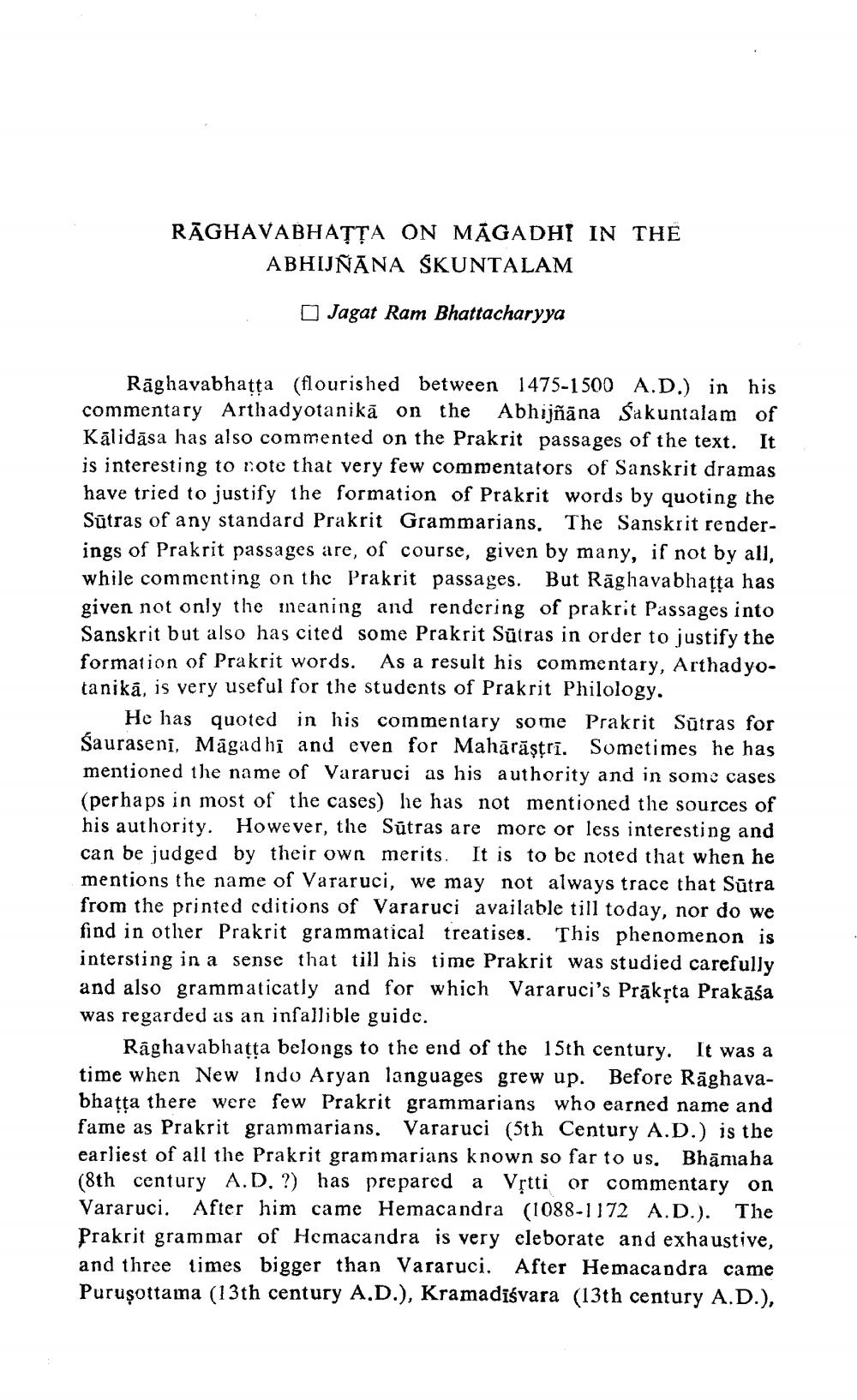________________
RAGHAVABHAṬṬA ON MAGADHI IN THE ABHIJÑANA SKUNTALAM
Jagat Ram Bhattacharyya
Raghavabhaṭṭa (flourished between 1475-1500 A.D.) in his commentary Arthadyotanikā on the Abhijñāna Sakuntalam of Kalidasa has also commented on the Prakrit passages of the text. It is interesting to note that very few commentators of Sanskrit dramas have tried to justify the formation of Prakrit words by quoting the Sutras of any standard Prakrit Grammarians. The Sanskrit renderings of Prakrit passages are, of course, given by many, if not by all, while commenting on the Prakrit passages. But Raghavabhaṭṭa has given not only the meaning and rendering of prakrit Passages into Sanskrit but also has cited some Prakrit Sutras in order to justify the formation of Prakrit words. As a result his commentary, Arthadyotanika, is very useful for the students of Prakrit Philology.
He has quoted in his commentary some Prakrit Sūtras for Sauraseni, Magadhi and even for Mahārāṣṭrī. Sometimes he has mentioned the name of Vararuci as his authority and in some cases (perhaps in most of the cases) he has not mentioned the sources of his authority. However, the Sūtras are more or less interesting and can be judged by their own merits. It is to be noted that when he mentions the name of Vararuci, we may not always trace that Sūtra from the printed editions of Vararuci available till today, nor do we find in other Prakrit grammatical treatises. This phenomenon is intersting in a sense that till his time Prakrit was studied carefully and also grammaticatly and for which Vararuci's Prākṛta Prakāśa was regarded as an infallible guide.
Raghavabhatta belongs to the end of the 15th century. It was a time when New Indo Aryan languages grew up. Before Raghavabhatta there were few Prakrit grammarians who earned name and fame as Prakrit grammarians. Vararuci (5th Century A.D.) is the earliest of all the Prakrit grammarians known so far to us. Bhamaha (8th century A.D. ?) has prepared a Vrtti or commentary on Vararuci. After him came Hemacandra (1088-1172 A.D.). The Prakrit grammar of Hemacandra is very eleborate and exhaustive, and three times bigger than Vararuci. After Hemacandra came Purusottama (13th century A.D.), Kramadiśvara (13th century A.D.),




